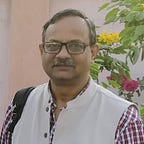Drones for planning rural infrastructure: an innovative approach
What are the challenges?
The Mahatma Gandhi National Rural Employment Guarantee Scheme (MGNREGS) targets nearly 50 million of the poorest people in rural India — providing a basic safety net and promoting long term poverty reduction through improved infrastructure, primarily linked with water management and agriculture.
The MGNREGS currently faces three challenges:
- Measuring the impact of MGNREGS infrastructure on the poorest people to inform technical and policy reforms;
- Monitoring the progress and quality of the works to ensure effective use of public money;
- Applying accurate data to improve planning and designing of infrastructure.
These challenges can be addressed through innovative use of new technology such as the drones to cost effectively monitor both the implementation and impact of MNREGS infrastructure.
Why drones?
One of the basic requirements of all water related infrastructure projects is high resolution topographic information to derive all terrain parameters. Drones can provide topographic data at a resolution of less than 50 cm at a very low cost in addition to the high resolution images of the project area with very limited ground visits particularly to inaccessible areas.
This also helps in identifying hotspots and hurdles, if any, of the project. Further, the current strategy of the MGNREGS projects are very location specific and even two adjacent projects are not connected to derive larger benefits. A larger and regional perspective of the proposed project and possible integration with other projects is possible with the use of drones to derive combined benefits.
High resolution topographic data and multispectral images can also provide improved computation of hydrologic and hydraulic parameters to refine the estimates of runoff and discharges. Finally, the data acquired from drone can provide a complete archive of all data and images to use these to monitor the project implementation and benefits accrued from the project at a later stage.
What did we do?
Three pilot projects have been designed with the support from the Frontier Technology Livestreaming Program in three different parts of the country:
(a) Design of a farm pond and inlet structures in Rajnangaon district, Chhattisgarh;
(b) Land improvement and water harvesting structures in Keonjhar district, Odisha;
(c) Rejuvenation of Ahar-pyne structures in Muzaffarpur district, Bihar.
In each case, the basic protocol for the use of drone would be similar but the application of the data will vary. Conceptually, there are four steps of the protocol — problem identification, field visit, problem refinement and assessment of drone applications and specific data requirement
The typical methodology followed in designing these pilot projects started with site visits and interaction with the local communities to understand their needs and also to visualize the ground conditions.
Based on the specific projects, the data requirements and specific inputs from drones were identified. The most important issue here was to assess the specific areas where significant improvement through the use of drone was possible both in terms of quality of data as well as in terms of cost of data acquisition.
What Next?
The key assumptions are that drones can capture high resolution images of a terrain and provide precise analysis of its characteristics such as catchment area, land use pattern, soil type, water bodies, human settlements and quality of existing infrastructure. The digital elevation models obtained from drones can help in precise and regional scale planning and monitoring even in most inaccessible areas.
It is envisaged that this technology would benefit the projects under the Mahatma Gandhi National Rural Employment Guarantee Scheme (MGNREGS) immensely in terms of resource saving, time and robustness of the water infrastructure. The application of drones will facilitate the collection of high resolution 3D images and provide relevant analysis to facilitate appropriate site selection, durable and resilient designing and improved monitoring of water and agriculture related infrastructures.
This project is likely to have a strong impact on the technical staff and communities involved in designing and implementation of MGNREGS infrastructure as this will demonstrate the use of high resolution images from drones for MGNREGS planning and infrastructure design process. It is expected that these pilot projects will demonstrate drones as a cost-effective tool for pan-India use within MGNREGS and other rural infrastructure programmes in India. It will also create a market for drones and analytics services.
An important resilience effect of this technology would be that the images and analysis provided by drones will overall improve effectiveness of large public programmes by building quality infrastructure and support sustainable and resilient livelihoods of rural population. It may be desirable to develop some sort of matrix to assess the benefits of using the drone versus existing methods; some of the parameters that may be used for such a matrix may include area surveyed per hour, cost per square hectare, precision achieved leading to design improvement, data reproducibility, and of course time investment in each project.
It is extremely important that the application of drones in planning and monitoring of rural infrastructure as well as for other applications is advocated at the highest possible level in India as a huge market is just waiting to explode!
The pilot projects involving the application of drones for MGNREGS infrastructures are funded by the Frontier Technology Livestreaming Challenge Fund and DFID India’s Infrastructure for Climate Resilient Growth programme.
